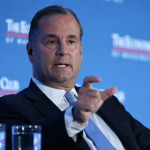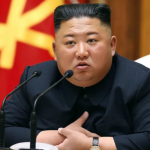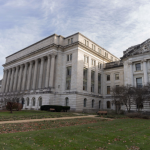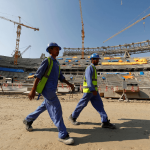
Kenya’s public healthcare division: about 4,000 specialists started a collective strike.
Last updated on April 29th, 2024 at 11:00 am
On March 14, 2024, a noteworthy occasion unfurled inside Kenya’s public healthcare division: about 4,000 specialists started a collective strike. Their collective activity stemmed from a longstanding request for the execution of a labor ascension fashioned with government support in 2017. This understanding, among its guarantees, promised to upgrade doctors’ compensations, enhance working conditions, and support the enlistment of extra restorative experts. The government, citing financial limitations and the agreement’s affiliation with an earlier organization, argued that satisfying these commitments was not doable.
Fundamental Grievances and Chronicled Setting
Digging into the center of the matter, Kahura Mundia, a specialist on therapeutic law and morals, and the delegate chair of the striking doctors’ union, lit up the roots of the discontent. Over the previous seven years, doctors had engaged in different promotion endeavors to address their grievances. Central to their disappointment was the 2017 collective haggling ascension, an item of extended arrangements taking after a 100-day strike that concluded in March 2017. In spite of its detailing of clear terms with respect to business and benefits for specialists, the ascension mulled without full usage.
Legitimate Mediation and Transaction Endeavors
In reaction to the strike, the government and administration of a conspicuous open healing center sought after lawful roads to control the turmoil. The business and labor relations court interceded, incidentally suspending the strike on March 15. The court’s order made arrangements between managers and specialists to discover staffing prerequisites and crisis care arrangements. Ensuing exchanges between union agents and government authorities fizzled to surrender a determination, worsening the deadlock.
ALSO READ: Florida Law Worker Protection Wages: Controversy and Concerns
Broader Healthcare Segment Challenges
Past the prompt requests of striking specialists lay systemic challenges tormenting Kenya’s healthcare scene. Grievances expanded to issues such as lacking health protections scope, postponed situations for restorative understudies, proposed soak compensation diminishments for understudies, staffing deficiencies, and a need of standardized staffing standards. In addition, both national and district governments had neglected doctors’ preparing needs, denying postgraduate thinking about take off and dismissing preparing expense installments for six years.
This broader setting underscored the diligent underfunding of Kenya’s healthcare segment, reliably falling short of the 15% budget assignment benchmark laid out in the Abuja Declaration of 2001. Such underfunding worsened sector-wide precariousness, with the disappointment to prioritize healthcare human assets at its focus.
In spite of the occasional audit of collective bartering ascension in each four years, transactions for a modern understanding proposed in 2021 stagnated. Kenya proceeded to hook with an extreme deficiency of specialists, with a insignificant 2.3 specialists per 10,000 individuals, well under the World Health Organization’s suggested proportion.
The high cost of healthcare compounded problems, especially for financially marginalized Kenyans who were overwhelmingly dependent on insufficiently staffed and prepared public healthcare offices. Past labor debate had underscored the basic for concerted endeavors to address healthcare workers’ requests, dating back to the foundation of the doctors’ union in 2011 taking after the sanctioning of the 2010 structure.
Ensuing decentralization of healthcare administration to provincial governments in 2013 included complexity to settling doctors’ welfare issues. In spite of earlier assertions, progressive organizations had fizzled to honor commitments, regularly conditioning arrangements on strike cessation.
In tending to the show deadlock, comprehensive execution plans and genuine commitment to arrangements were basic. Specialists supported reasonable labor rights and collective bargaining, aligning with sacred arrangements and universal labor measures. Important exchange, grounded in great confidence and regard for the rule of law, developed as the linchpin for settling systemic labor challenges inside Kenya’s healthcare segment.







